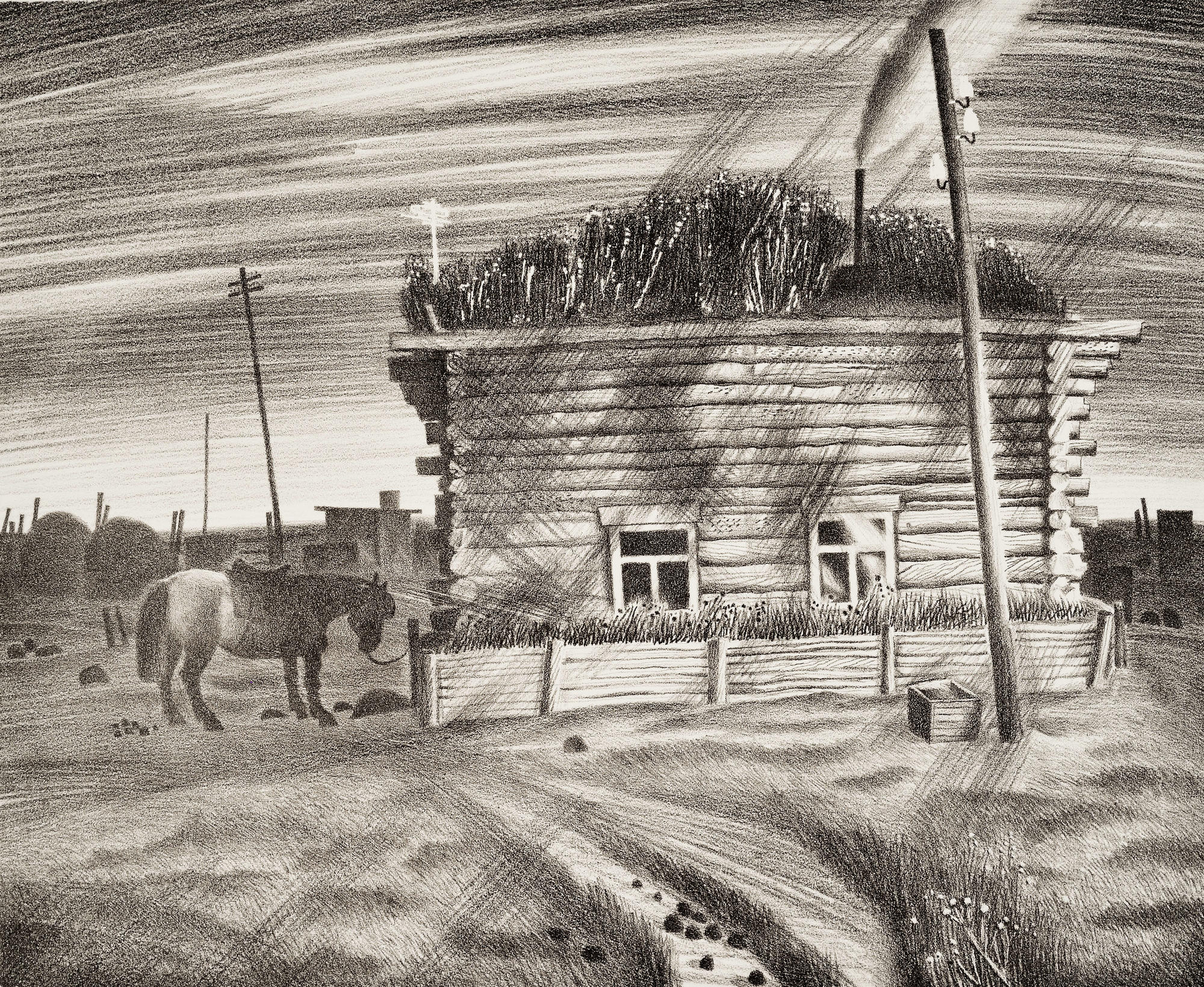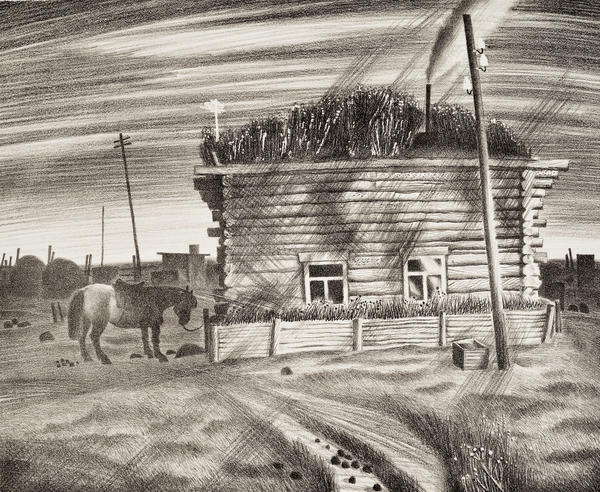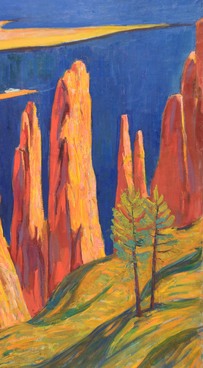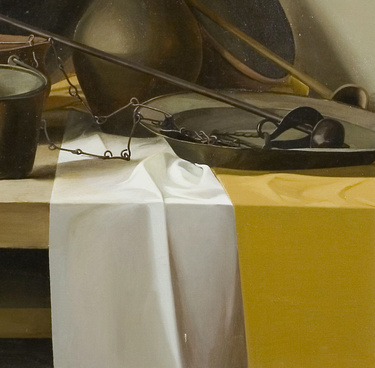Aleksei Yevstafyev is an outstanding representative of the Yakut graphic art. He was born in the family of hereditary horse breeders in the Yakut village of Appany in the Namsky district. He went to Moscow to study painting and entered the Moscow State Art Institute named after V.i. Surikov. After graduation, the painter returned back home.
In his works, Yevstafyev often depicted scenes from his childhood. He painted his village, his parents' home, horses, pastures and nature, perceiving the world through his childhood memories. He created harmonic landscapes imbued with romantic imagery that was enhanced by his impeccable technique.
In 1988, the painter went to the Chelyuskinskaya Dacha, a country house near Moscow, a well-known place among artists. It was a creative residence and workshop space of the Union of Artists of the USSR. To ‘enroll’ in the residence programme, young painters first submitted their concepts and went through a selection process. The winners could stay and work there for two months, with all travel expenses covered by the Union of Artists. The workshop had all the necessary materials and tools for painting so that nothing would distract the young painters from translating their concepts into art.
There, Yevstafyev created his series of sketches called ‘Namsky Motives’, the lithograph ‘Outskirts’ is one of them. The Namsky ulus, the artist’s birthplace, is one of the central districts of the Sakha Republic. The majority of its residents breed horses and cattle.
Yevstafyev depicted a small log house in the village, with a Yakut horse tethered to the fence rail close to the house. This local horse breed is very sturdy: the Yakut horse can withstand the most severe frost and cover a great distance without tiring. The painter loved horses from childhood, knew their habits and often went to pastures with his father, which helped him to accurately draw the horse silhouette with all its curves and the long mane.
The lithograph conveys the artist’s nostalgia - longing for his homeland. Although he created it a long way from home, he was able to accurately render the details of the Yakut rural life and the nature of the North: the smoke from the chimney, haystacks in the distance, the grass swaying in the foreground - all this makes the lithograph alive.



